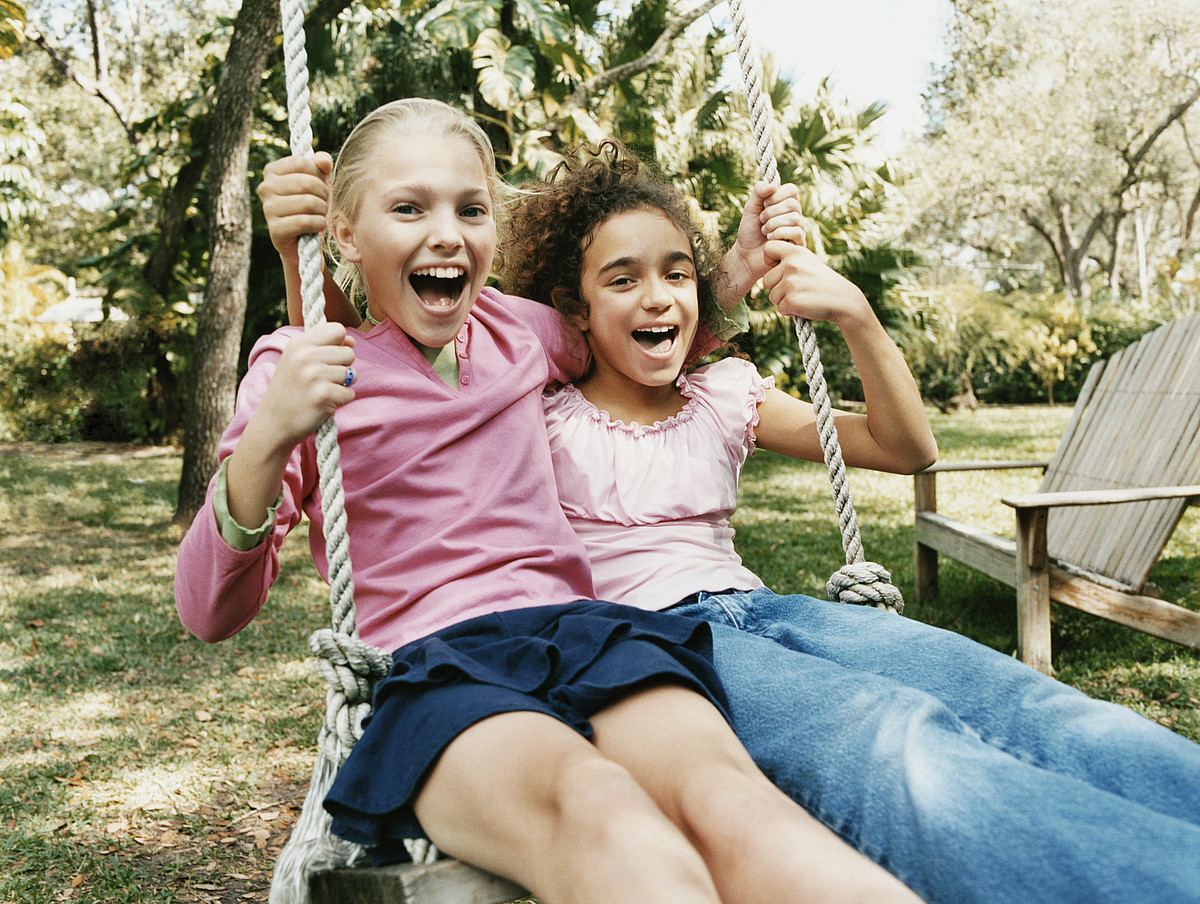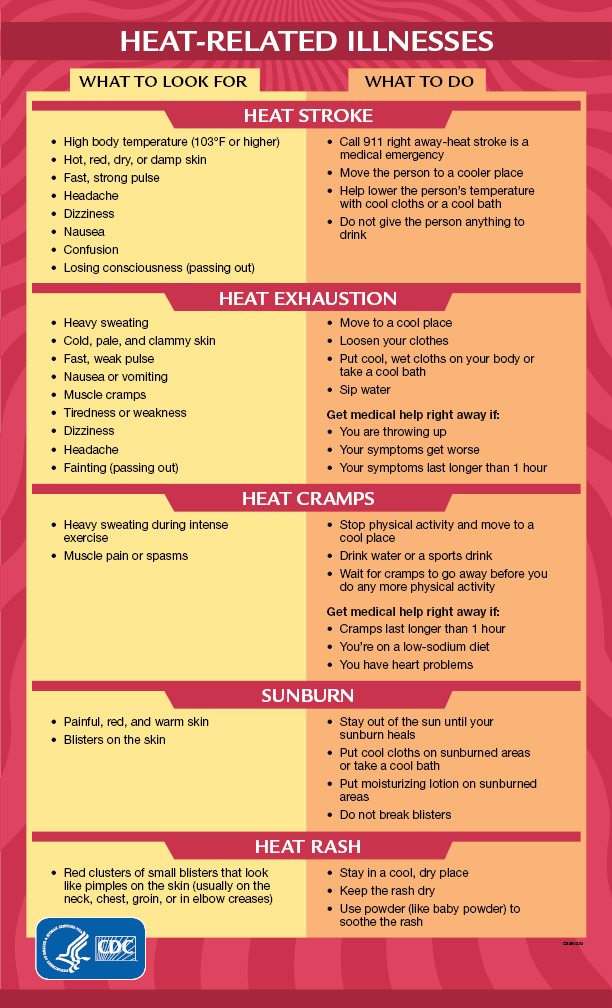
A Healthier Tomorrow – Make Summer Safe for Kids
Imagine a Healthier Tomorrow
By Alison H. Page
Summer means lots of kids will be playing outdoors, but it’s important to keep a safety checklist in mind to keep kids safe while they’re having fun. Here are some great tips to keep in mind for kids’ safety. Post this safety checklist on your fridge or family bulletin board as a reminder of ways you can keep your kids safe and prevent injuries or accidents from intruding on your family’s summer fun.
- Practice Summer Sun Safety for Kids
When it comes to protecting your kids from the sun, sunscreen plays an important role. But sunscreen is just one of the ways to guard against the sun’s damaging rays. Because the sun’s rays can reflect off of the sand and water or other reflective surfaces, hats, and sunglasses can also play an important role in preventing UV damage.
Just a few serious sunburns can increase you and your child’s risk of skin cancer later in life. Their skin needs protection from the sun’s harmful ultraviolet (UV) rays whenever they’re outdoors.
- Apply sunscreen. Use sunscreen with at least SPF (sun protection factor) 15 and UVA (ultraviolet A) and UVB (ultraviolet B) protection every time you and your child go outside. It can certainly be challenging to remember to apply sunscreen at least 30 minutes before going outdoors. But that’s exactly what you and your kids should do before heading outside, even on cloudy days (that’s because UVA rays can go right through the clouds and still cause damage). Use generous amounts of UVA- and UVB- blocking sunscreen with an SPF of at least 15 and reapply every two hours or more often after swimming or sweating. Studies have shown that people often underestimate how much sunscreen they should be using, so be sure to follow the directions on the package (about one ounce for the entire body is usually the recommended amount). If your grade-schooler is old enough and wants to apply his own sunscreen, supervise the application and remind him to wash his hands when he’s done so that he doesn’t accidentally rub sunscreen into his eyes. Finally, avoid using combination sunscreens with insect repellants because when sunscreen is reapplied, it can lead to excessive exposure to the repellant.
- Get some sun-protective clothing. Dress your kids in hats in wide brims and tightly-woven cotton clothing or clothes that have SPF built-in (many kids’ clothes, especially swimsuits, have sun protection in them nowadays). Try to stay out of the sun between 10 a.m. and 4 p.m., when the sun is at its most intense peak, and try to stay in the shade as much as possible.
- Shop for some cool shades. Don’t forget your child’s eyes when you are out and about. Look for kids’ sunglasses that block 99 to 100 percent of UVA and UVB rays. You don’t need to spend a lot on kid sunglasses — research has shown that inexpensive sunglasses that are labeled as protective for UVA and UVB are effective in blocking the sun’s harmful rays.
- Remember that you can still get a sunburn even if it’s cloudy. Sunburns do not happen only on sunny days; up to 80 percent of the sun’s UV rays can penetrate the skin, even on cloudy days, according to the American Academy of Dermatology.
- Protect Against Bugs
Bugs are one of those annoyances of summer. But insects such as potentially disease-carrying mosquitoes and bees can also be harmful to kids. To protect your child against bugs:
- Use insect repellents to guard against ticks, which can carry Lyme Disease, and mosquitoes, which can carry the West Nile Virus and other viruses. Many repellents are made with DEET, an effective insecticide that is toxic or even potentially deadly if swallowed. If you do use a product containing DEET, it’s crucial not to apply the product to a child’s hands or face to avoid possible ingestion; it’s also important to wash off the product before bed to prevent overexposure to the chemical. Another effective ingredient found in repellents is picaridin, but DEET is the most effective, and what doctors recommend (at 30 percent DEET concentrations) given the dangers posed by viruses such as West Nile.
- An alternative to DEET-containing repellents are natural insect repellents; however, parents should keep in mind that “natural” doesn’t always mean “safe.” Talk to your pediatrician about which insect repellent is right for your family.
- Wear long sleeve shirts and long pants when going outside, particularly at dusk when mosquitoes are more likely to be present.
- Never leave stagnant pools of water around the house. Pools of water can serve as breeding grounds for mosquitoes.
- Avoid using scented soaps or perfumes on your child. And do not allow your child to walk around carrying sweetened beverages, such as fruit juices. These sweet, strong scents can attract bees and wasps and increase your child’s risk of being stung.
- Prevent Dehydration – Beat the Heat
Heat-related illness happens when the body’s temperature control system is overloaded. Infants and children up to 4 years of age are at greatest risk. Even young and healthy people can get sick from the heat if they participate in strenuous physical activities during hot weather. For heat-related illness, the best defense is prevention.
- Never leave infants, children, or pets in a parked car, even if the windows are cracked open.
- Dress infants and children in loose, lightweight, light-colored clothing.
- Schedule outdoor activities carefully, for morning and evening hours.
- Hydrate – kids should drink water before exercise and during breaks, which should be about every 15 to 20 minutes.
- Stay cool with cool showers or baths.
- Seek medical care immediate if your child has symptoms of heat-related illness. https://www.cdc.gov/disasters/extremeheat/warning.html
- Don’t Forget Helmets
Your child should wear a helmet whenever she is on anything with wheels, such as a scooter, bicycle, or roller skates. A helmet is the most important device available that can reduce head injury and death from a bicycle crash, according to Safe Kids USA. And be sure to set a good example by always wearing your helmet when riding your bike.
- Practice Food Safety
Foodborne illnesses increase in the summer because bacteria grow faster in warmer temperatures and humidity. On top of that, more people are eating and preparing food outdoors, at picnics and barbecues, where refrigeration and places to wash hands are not readily available.
To prevent foodborne illnesses:
- Be sure to wash your hands before preparing or serving any food. Make sure your children wash their hands, or at least use an alcohol-based hand sanitizer, before eating.
- Never cross-contaminate. Do not allow any raw meat or poultry to come into contact with any other food or plates or utensils.
- Consider the temperature. Use a thermometer and be sure to cook all meat and poultry to the correct temperatures to kill any harmful bacteria. Keep all perishable foods in the refrigerator and do not keep leftovers unrefrigerated for more than one or two hours.
- Guard Against Drowning
Each year, more than 700 children ages 14 and under die as a result of accidental drowning, and five times that many (3,500) require emergency care due to near drowning injuries. Between May and August, drowning deaths among kids increase by a whopping 89 percent. If you have a swimming pool or if your child will be near one, it is crucial to put multiple safety measures in place to keep kids safe.
- Put barriers around the pool to restrict access. Four-sided fences are best; fences that are not attached to the back patio of your home where children can get through a sliding door into the pool area. Use doors with locks and alarms to keep kids out when adults are not present.
- Never leave kids unsupervised. Even if your grade-schooler is a confident and capable swimmer, do not leave the pool area without adult supervision if children are in or near the water.
- Remember that drownings can happen silently. You may not hear splashing or a call for help—a drowning can happen in minutes and may be silent.
- Do not use flotation devices. Inflatable “floaties” and other flotation devices and toys can give kids who cannot swim a false sense of security.
- Learn CPR. You may never need to use it, but knowing CPR for adults and for kids is something that can mean the difference between life and death in an emergency.
- Learn about the dangers of secondary drowning, which can happen on dry land, hours after a child inhales water into the lungs.
- Do not assume that a teen or relative will be watching. Talk to them about not using cell phones, texting, or allowing other distractions while supervising kids in the water.
Recreational boating can be a wonderful way to spend time with family and friends. Make boating safety a priority.
- Wear a properly fitted life jacket every time you and your loved ones are on the water.
- Avoid Trampoline Danger
Over 90,000 emergency-room visits were related to trampoline injuries each year, according to U.S. Consumer Product Safety Commission (CPSC). Some trampoline safety tips: Never let more than one child use the trampoline at a time, do not let kids do somersaults, and do not allow kids younger than 6 play on a full-sized trampoline, and move the trampoline away from other structures or play areas.
- Warn Kids About Hiding in Enclosed Spaces
Teach children to never play hide and seek by crawling inside an enclosed space such as a car trunk, chest, or old cooler or appliance.
- Use Caution When Doing Yardwork
Never allow children to ride on lawnmowers or to play near motorized lawn equipment. Do not allow children under age 12 to operate push mowers and do not allow children younger than 16 to operate ride-on lawnmowers.
In addition to lawnmowers, be sure to never allow your young child to ride an ATV (all-terrain vehicle). ATVs are responsible for more than 300 deaths annually in the U.S. It is not recommended that children under the age of 16 ride an ATV.
- Safeguard Home Playgrounds
Each year in the United States, emergency departments treat more than 200,000 children ages 14 and younger for playground-related injuries. Falls at home and on the playground are a common cause of injury.
If you have a backyard playground or play equipment, make sure the ground beneath the equipment is soft enough. Surfaces made of concrete, asphalt or dirt are too hard and do not absorb enough impact in the event of a fall. Instead, it is recommended you use at least 9 inches of mulch or wood chips.
Have a fun and safe summer!


